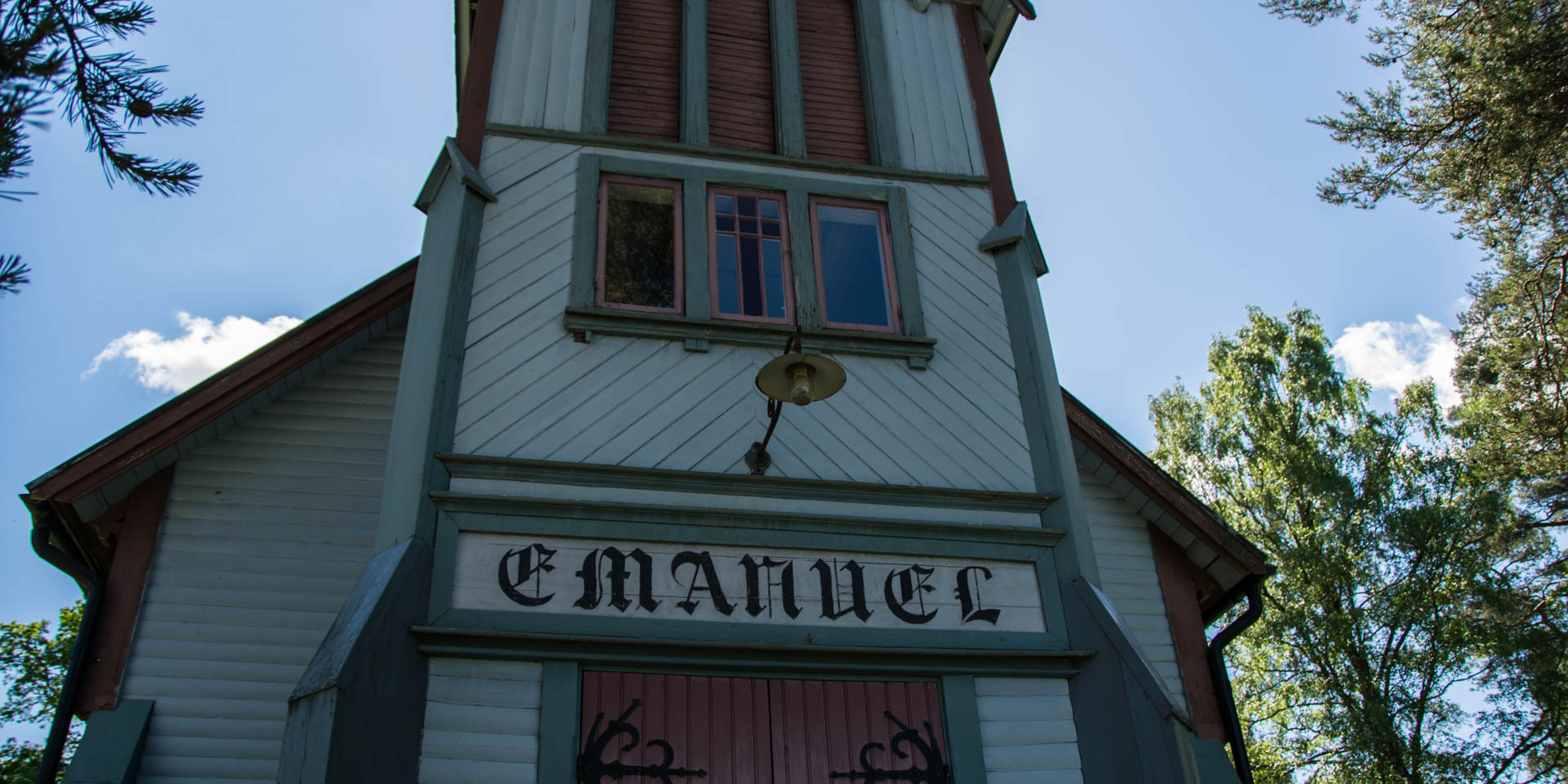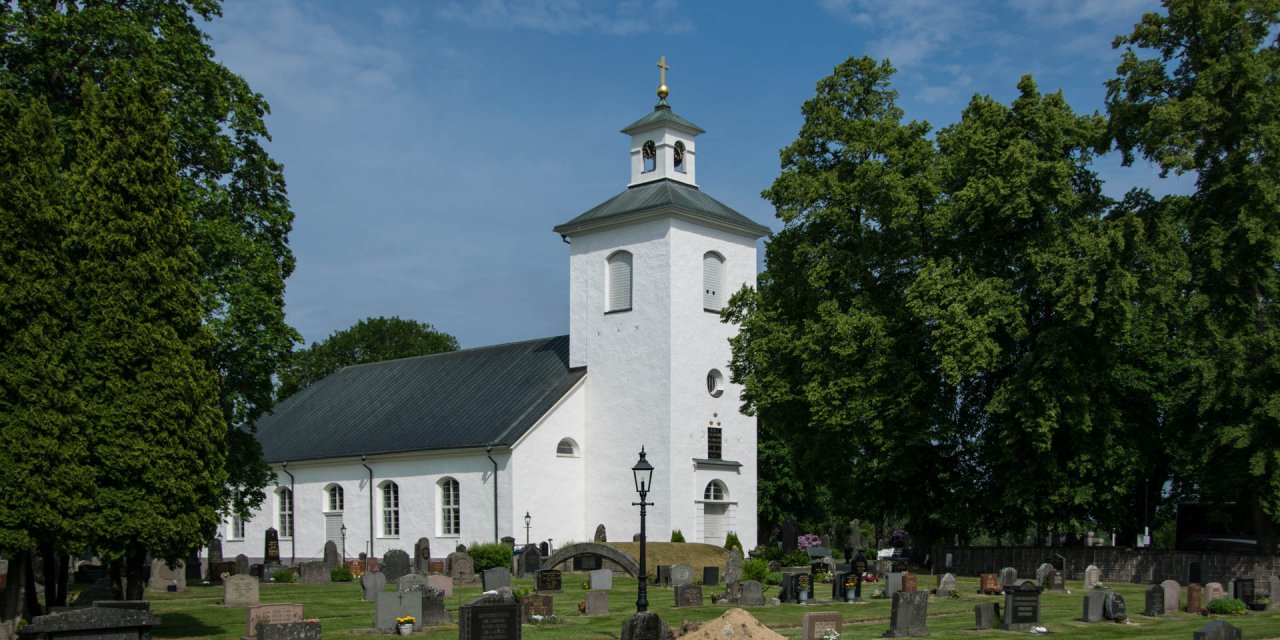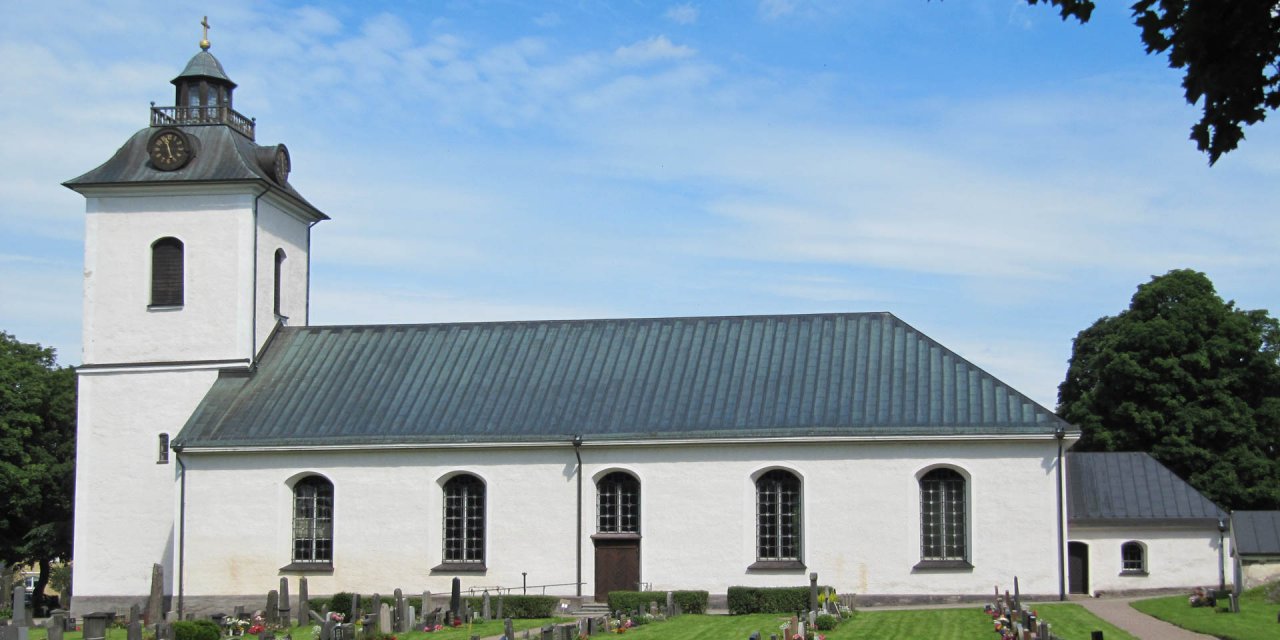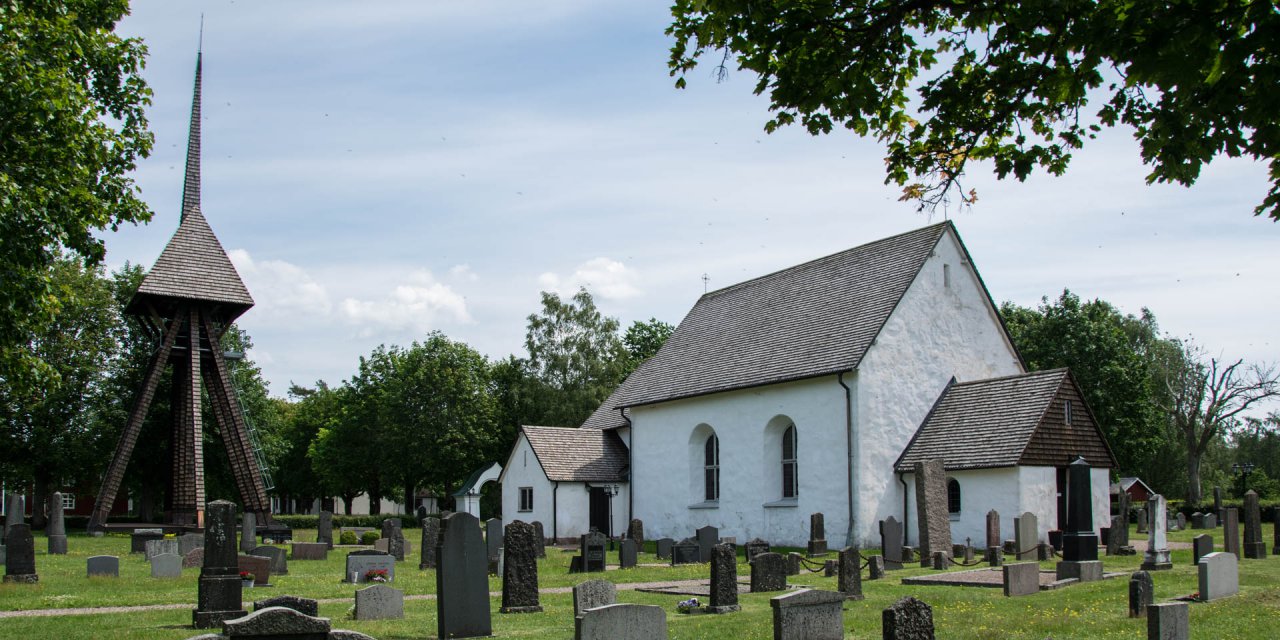

Emanuelskapellet
Wooden church near Delary
The pretty little wooden church Emanuelskapellet is located in the hamlet of Holmseryd near Delary, in the west of the municipality of Älmhult. Until 1965 it was the church of the local Methodist community and in 1999 it was declared an architectural monument.
In contrast to the usually very simple churches of the Methodist church, the architecture of the Emanuelskapellet shows the usual image of a typical church – with a rectangular nave, attached sacristy and a 25-meter-high steeple with a high, slender roof.
The external appearance of the Emanuelskapellet shows a diversified mix of different styles, in which mainly influences of the national romanticism and the neo-gothic, but also of the North American church architecture can be found. The exterior walls are clad with horizontal, grey painted wooden panels red wooden shingles. Along the long sides and at the corners of the nave and tower there are massive buttresses as known from medieval church buildings.
The interior of the church appears bright. On the one hand, due to the wooden panels painted white and on the other hand, due to the numerous windows with partially coloured glazing. The darker contrast to this is formed by the brown-painted pews, whose head sides are designed in the form of a gable in neo-Gothic style.
The decoration is very simple in comparison to the usual church decoration and consists only of a few murals and a large chandelier made of brass. The view is therefore directed automatically to the large altarpiece depicting the Deposition of Jesus on the Cross, which is a copy of the famous painting by Rubens made by a local painter.
The history of the Emanuelskapellet
Emanuelskapellet was built from 1893 to 1895 according to the plans of a large carpentry workshop, which was one of the pioneers in the construction of prefabricated houses. After the completion of the church, the Methodist congregation was very popular, so that the number of members grew from 30 to 50 and during its best times to about 100 members.
After the good years around the turn of the century the number of parishioners slowly but steadily decreased. In 1965 the Methodist parish of Delary was the smallest parish in Sweden with only one member left. The church was no longer in use and began to decay, so in the 1970s there were discussions about either demolishing the church or exhibiting it in the open-air museum Skansen in Stockholm.
Finally, it was decided to leave the church where it was, as it is considered a cultural and historical monument closely linked to Delary's industrial heyday at the turn of the century. At that time Delary was the site of one of the first large pulp mills in Sweden, and since the Methodist Church as a large popular movement of its time was well received nationwide, especially among the factory workers, a Methodist community was also established in Delary.
The fate of the church would have been sealed, however, if the owner of a large painting company had not taken the initiative in the 1970s and saved Emanuelskapellet from final decay by a last minute renovation. In 1993, when the next renovation was due, the local heritage society Göteryds Hembygdsförening bought the chapel for a symbolic price from the Methodist Church, having previously secured the support of the provincial administration and the municipality.
In the following years the local heritage society renovated the church, which had only been slightly changed since its completion in 1895, with a lot of voluntary work and a contribution from the state office for the preservation of historical monuments. In 1999, Emanuelskapellet was finally declared a historical monument and is now even used again occasionally as a church, especially for weddings and baptisms, as the local history association rents it out to the Swedish Church during the summer months.



